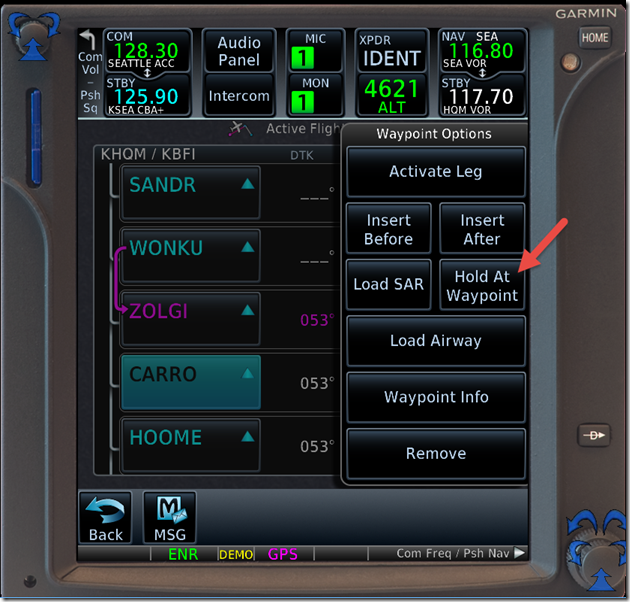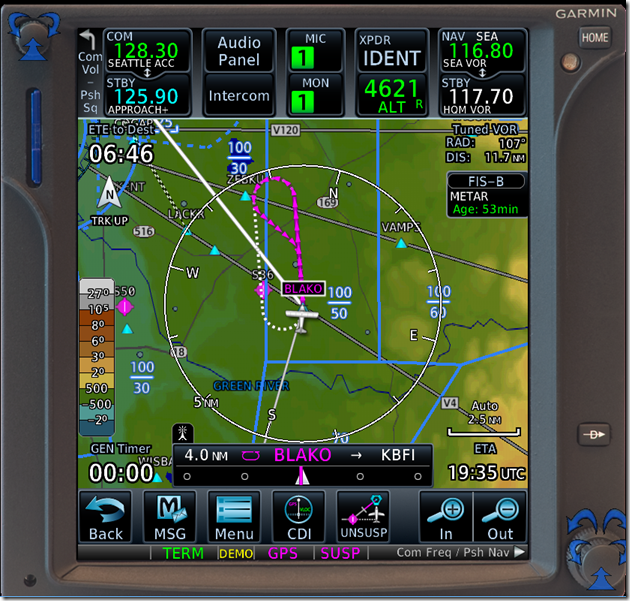Garmin has released updated system software (version 6.11) for the GTN series of navigators. The software includes several new features. One of the changes, at least for day-to-day operations for typical general aviation pilots, involves the behavior of the vectors-to-final option (VTF) available when loading an approach.
To learn about and practice using the new features in GTN system 6.x, download the latest version of the free GTN 750 PC Trainer Lite from Garmin. The download includes updated manuals (PDFs) for the GTN series avionics that describe the new features in version 6.x.
The updated Pilot’s Guide for the new system software notes that “all waypoints along the final approach course, including waypoints before the FAF, are included in the flight plan.”
As I noted in Avoiding the Vectors-to-Final Scramble, current versions of the system software for Garmin GNS and GTN units remove all fixes except the FAF and the MAP when you choose VTF:
When you load an approach into your IFR GPS box and choose Vectors-to-Final, the computer typically erases all fixes except the FAF and the MAP, making the snazzy moving map far less useful as an aide to situational awareness. Vectors-to-Final also may lead to a frenzy of knob turning and button pushing if ATC unexpectedly clears you to an IAF or IF instead of setting you up on a heading to intercept the magic magenta extended centerline that Vectors-to-Final draws on your screen.
A note in AIM 5-4-6 Approach Clearance recognizes this issue:
Selection of “Vectors-to-Final” or “Vectors” option for an instrument approach may prevent approach fixes located outside of the FAF from being loaded into an RNAV system. Therefore, the selection of these options is discouraged due to increased workload for pilots to reprogram the navigation system. (AIM 5-4-6)
For that reason, like many instructors, I’ve long recommended against using VTF, especially because ATC can clear an RNAV-capable aircraft direct to an IF or to a fix between the IF and the FAF on any approach (again, see AIM 5-4-6).
For more information, see also Flying Instrument Approaches without Activating the Approach here at my blog.
The change in behavior in GTN units updated to system 6.x may change that recommendation, at least when flying some approaches.
Example: Flying the New VTF
Consider the RNAV (GPS) Y RWY 16R approach at Paine Field (KPAE) north of Seattle, home of the Boeing wide-body aircraft factory that produces the 747, 767, 777, and 787 models. It’s a typical RNAV approach.
If you fly the approach with the current system software for a Garmin GNS or GTN navigator, selecting the VTF option removes all of the fixes except for ITIPE (the FAF) and RW16R (the MAP). The map shows a magenta line extending from the MAP, through the FAF, and out along the final approach course north of the runway. If ATC clears you to EYWOK (an IF/IAF), you must reload the procedure and choose EYWOK as the transition (or ask for a new clearance).
If you choose VTF in an updated GTN navigator, however, the new system software includes all of the fixes along the final approach course, from EYWOK to the MAP at the runway threshold. The FAF, in this case ITIPE, becomes the active waypoint in your flight plan.
And the map shows a magenta line extending from ITIPE out to EYWOK, providing a reference as ATC vectors you to intercept the final approach course.
At this point, I’m still waiting for Garmin to release the new GTN system software and have it installed on my GTN 750. But my tests with the Garmin training software suggest that VTF may become a useful feature when flying some approaches.
If you’re flying with current system software or with a GNS-series unit such as GNS 530 or GNS 430, however, you should follow the recommendation in the AIM and in Avoiding the Vectors-to-Final Scramble to help you stay ahead of the airplane—and your avionics–when flying approaches.
For more information, see also Flying Instrument Approaches without Activating the Approach here at my blog.
















































